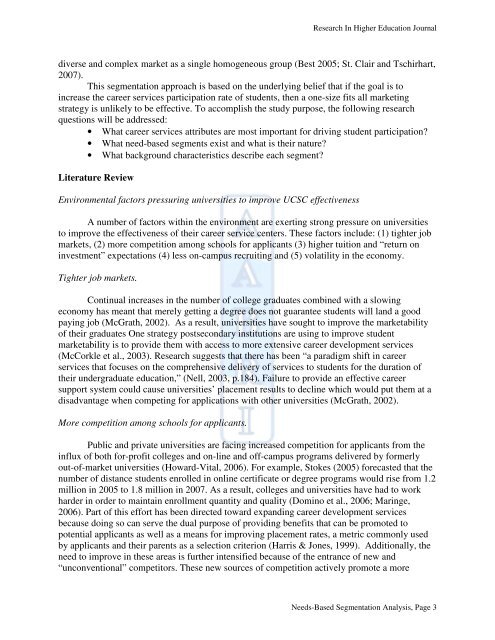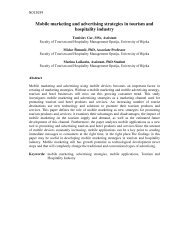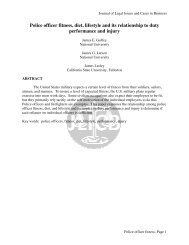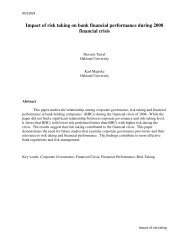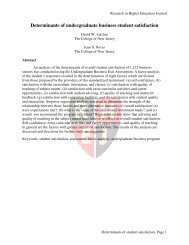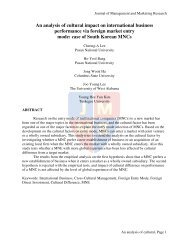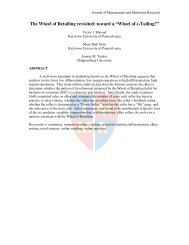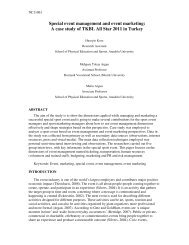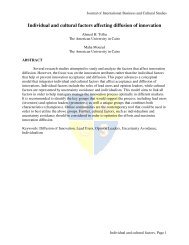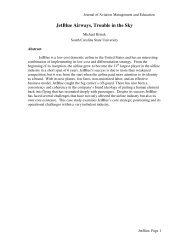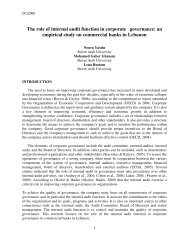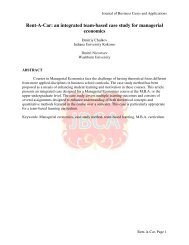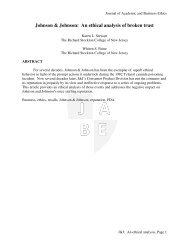Need-Based Segmentation Analysis of University Career Services ...
Need-Based Segmentation Analysis of University Career Services ...
Need-Based Segmentation Analysis of University Career Services ...
You also want an ePaper? Increase the reach of your titles
YUMPU automatically turns print PDFs into web optimized ePapers that Google loves.
Research In Higher Education Journal<br />
diverse and complex market as a single homogeneous group (Best 2005; St. Clair and Tschirhart,<br />
2007).<br />
This segmentation approach is based on the underlying belief that if the goal is to<br />
increase the career services participation rate <strong>of</strong> students, then a one-size fits all marketing<br />
strategy is unlikely to be effective. To accomplish the study purpose, the following research<br />
questions will be addressed:<br />
• What career services attributes are most important for driving student participation?<br />
• What need-based segments exist and what is their nature?<br />
• What background characteristics describe each segment?<br />
Literature Review<br />
Environmental factors pressuring universities to improve UCSC effectiveness<br />
A number <strong>of</strong> factors within the environment are exerting strong pressure on universities<br />
to improve the effectiveness <strong>of</strong> their career service centers. These factors include: (1) tighter job<br />
markets, (2) more competition among schools for applicants (3) higher tuition and “return on<br />
investment” expectations (4) less on-campus recruiting and (5) volatility in the economy.<br />
Tighter job markets.<br />
Continual increases in the number <strong>of</strong> college graduates combined with a slowing<br />
economy has meant that merely getting a degree does not guarantee students will land a good<br />
paying job (McGrath, 2002). As a result, universities have sought to improve the marketability<br />
<strong>of</strong> their graduates One strategy postsecondary institutions are using to improve student<br />
marketability is to provide them with access to more extensive career development services<br />
(McCorkle et al., 2003). Research suggests that there has been “a paradigm shift in career<br />
services that focuses on the comprehensive delivery <strong>of</strong> services to students for the duration <strong>of</strong><br />
their undergraduate education,” (Nell, 2003, p.184). Failure to provide an effective career<br />
support system could cause universities’ placement results to decline which would put them at a<br />
disadvantage when competing for applications with other universities (McGrath, 2002).<br />
More competition among schools for applicants.<br />
Public and private universities are facing increased competition for applicants from the<br />
influx <strong>of</strong> both for-pr<strong>of</strong>it colleges and on-line and <strong>of</strong>f-campus programs delivered by formerly<br />
out-<strong>of</strong>-market universities (Howard-Vital, 2006). For example, Stokes (2005) forecasted that the<br />
number <strong>of</strong> distance students enrolled in online certificate or degree programs would rise from 1.2<br />
million in 2005 to 1.8 million in 2007. As a result, colleges and universities have had to work<br />
harder in order to maintain enrollment quantity and quality (Domino et al., 2006; Maringe,<br />
2006). Part <strong>of</strong> this effort has been directed toward expanding career development services<br />
because doing so can serve the dual purpose <strong>of</strong> providing benefits that can be promoted to<br />
potential applicants as well as a means for improving placement rates, a metric commonly used<br />
by applicants and their parents as a selection criterion (Harris & Jones, 1999). Additionally, the<br />
need to improve in these areas is further intensified because <strong>of</strong> the entrance <strong>of</strong> new and<br />
“unconventional” competitors. These new sources <strong>of</strong> competition actively promote a more<br />
<strong>Need</strong>s-<strong>Based</strong> <strong>Segmentation</strong> <strong>Analysis</strong>, Page 3


